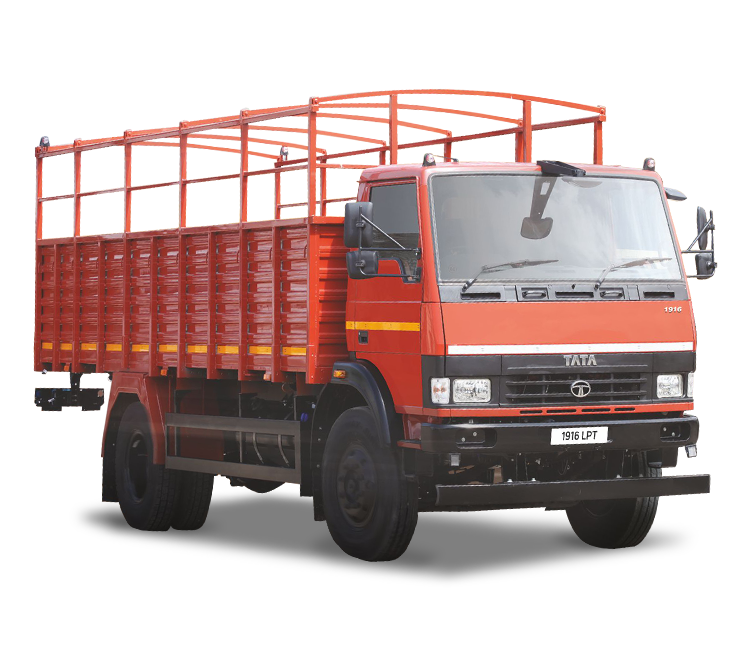Tata LPT 1916 Review — A Deep Dive for Fleet-Owners and Transporters

The Tata LPT 1916 occupies a key position in the medium-heavy Indian truck segment, with a Gross Vehicle Weight (GVW) of 18,500 kg and a payload capacity sufficient for many commercial cargo tasks. This review aims to examine the truck’s specification, real-world performance, strengths, and areas where buyers need to exercise caution—particularly in the context of its deployment in India.
Key Specifications at a Glance
Below are the headline specs of the LPT 1916:
- GVW: 18,500 kg.
- Engine: 3.3 L (3300 cc) 4-cylinder diesel (in many variants) or for certain modes, capable of higher output.
- Maximum power: Approximately 160 PS (≈118 kW) @ ~2,600 rpm in “heavy mode”.
- Maximum torque: Approx. 475 Nm @ 1,600-2,000 rpm in heavy mode.
- Fuel tank: Depending on variant, 160 L to 250 L.
- Body/cabin options: Available as day-cab, sleeper (in some body variations), cowl chassis, etc.
- Price (ex-showroom roughly, Delhi): Between ₹ 27.53 lakh and ₹ 29.34 lakh* (figure may differ by state/taxes).
*Note: Price as of the data published; always check current local pricing with the dealer.
What Works Well – Strengths
1. Payload & GVW match for many uses
With a GVW of 18.5 t and a reasonably powerful engine, the LPT 1916 is suitable for a broad set of cargo assignments—FMCG, white-goods, food grains, e-commerce, and general goods. The official spec sheet from Tata Motors lists “Applications: cement, e-commerce, food grains, FMCG, LPG Cylinder, container, white goods, fruits & vegetables.”
2. Modern compliance and features
The model listed supports BS6 emission norms. Moreover, features such as telematics, tilt & telescopic steering, power steering, ABS, etc., are now standard in the spec.
3. Good user feedback on the cost of operation & maintenance
According to user reviews:
“This truck is good in the cargo market, affordable price, low maintenance, features, and specs stand out, overall good to buy.”
Users cite decent resale value, reliable build, and ease of finding service/parts (thanks to the large network of the manufacturer).
4. Flexibility of body/chassis options
Multiple wheelbases, body lengths (17 ft, 20 ft, 22 ft, 24 ft), and different variants allow adaptation to many applications.
Considerations & Potential Weaknesses
1. Fuel efficiency/running cost
While no official “litres per km” figure is widely published (given variation by load, route, terrain), one spec source lists mileage of 5-6 km/l for one variant. For a heavy-load 18.5 t truck, this is within the expected range—but fleet owners should model fuel cost carefully.
2. Competition in the segment
Given the rate of change in commercial vehicles (engine technology, fuel efficiency, alternate fuels), potential buyers should compare with rivals (such as Ashok Leyland, Eicher, etc.) to see if the LPT 1916 offers the best value. Some competitor models may offer higher power/torque or specialised options.
3. Variant specificity matters
Different variants (cowl, sleeper, body length, wheelbase) may have significantly different specs (fuel tank size, body options) and price. For example, the SLR49 HSD variant lists a 250 L fuel tank and a different wheelbase. So when purchasing, confirm the exact variant specs.
4. Load conditions & route profile impact
In hilly terrain or heavy stop-start traffic, the real-world performance (gradeability, downtime) might differ from nominal specs. For example, one listing shows a gradeability of 33.3% in one variant.
Real-World Verdict
From the user feedback and specification review:
- For fleet operators carrying mid-to-heavy loads (up to ~13-14 tonnes of payload) on fairly level terrain and between major cities or industrial hubs, the Tata LPT 1916 is a strong choice: the specification matches the application, the brand has a good service network, and operators report good returns.
- For routes with very steep inclines, remote regions with sparse service support, or if you require ultra-high payloads or specialised fuel (e.g., LNG, CNG, electric), you may want to evaluate whether higher-power models or specialised variants would serve you better.
- Total cost of ownership matters: fuel consumption, maintenance intervals, spare parts availability, driver comfort, and downtime. The presence of modern features (telematics, power steering, ABS) helps reduce downtime and improve driver retention.
- Resale value appears to be favourable, according to user testimonials. In commercial trucking, resale and uptime matter almost as much as purchase cost.
Suitability for Different Use-Cases
| Use-Case | Verdict |
| FMCG/white-goods transport (between cities, steady roads) | Very well suited. |
| E-commerce logistics (frequent stops, moderate loads) | Suitable, but fuel cost will matter; route planning essential. |
| Construction site / very heavy loads / off-road conditions | Might be acceptable but consider higher-power or specialised variants. |
| Hilly/mountainous terrain | Works, but ensure gradeability and variant specs suit the terrain; may require power margin. |
Final Thoughts
If I were to summarise: the Tata LPT 1916 represents a balanced offering in the ~18.5 t GVW category. It offers modern compliance, good features, a user-friendly service network, and a competitive total cost of ownership. For the right route and load profile, it is likely a solid purchase. As always, the buyer must match the variant precisely (body length, wheelbase, fuel-tank size) to their operations, run the numbers for fuel & maintenance, and also evaluate competitor offerings.
